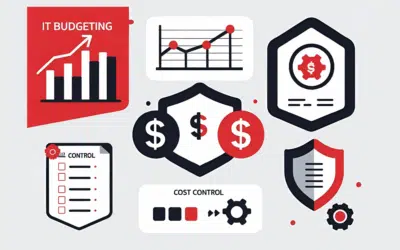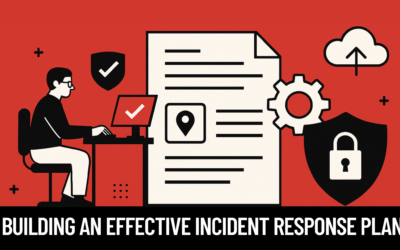From natural disasters and cyber attacks to hardware failures and broken water mains, a wide range of unforeseen events can bring business activities to a grinding halt, resulting in significant financial losses, damaged reputations, and compromised customer relationships. In such an unfortunate event, having a robust disaster recovery plan in place is not just a luxury but a necessity for ensuring business continuity and resilience.
Disaster recovery is a critical component of an overall business continuity strategy that focuses on preparing organizations to respond effectively to disruptions, minimize downtime, and restore operations as quickly as possible. It involves implementing a comprehensive plan that encompasses data backup, recovery procedures, and regular testing to ensure the plan’s effectiveness. By adopting a proactive approach to disaster recovery, businesses can not only safeguard their valuable data and systems but also gain a competitive edge by maintaining operational continuity in the face of adversity.
The Fundamentals of Disaster Recovery
Disaster recovery is a strategic plan that safeguards your business from unexpected disruptions. Like a safety net, it ensures you’re prepared and resilient when unforeseen incidents occur. What exactly is involved in this plan?
Think of your catastrophe response strategy as a schematic for maintaining business operations. It has three essential components.
Firstly, data backup. Regularly duplicating and storing all crucial business data is vital. Should your systems fail, a backup acts as your contingency, enabling you to retrieve lost data and quickly resume operations.
The next component is the recovery procedure. This procedure outlines the specific steps your organization should execute to recover from a disruption. It spans from identifying the problem and choosing the right recovery method to the intricate details of system restoration. You wouldn’t attempt to assemble a piece of furniture without a manual, right? This principle is equally applicable to your plan for disaster recovery. A detailed procedure helps you navigate a crisis without unnecessary panic or confusion.
The final component is testing. Disaster recovery isn’t a set-it-and-forget-it task. Regular testing of your plan is critical to ensure its effectiveness. Think of it as rehearsing for a play – the more you practice, the better your performance. In the same vein, consistent testing helps you spot and rectify any flaws in your plan, ensuring you’re always prepared.
In summary, a robust disaster recovery plan isn’t limited to having a backup. It’s about a holistic approach that includes data backup, a recovery procedure, and regular testing.
Top Threats to Business Continuity
Various threats can disrupt business operations. Prominent among these are natural disasters, cyberattacks, and hardware failures.
Natural disasters like floods, earthquakes, and hurricanes inflict physical harm to infrastructure, leading to data loss and downtime. For example, Hurricane Harvey wreaked havoc in Texas in 2017, disrupting many businesses and causing an estimated loss of $125 billion. The potential devastation natural disasters can inflict on businesses is hard to fathom.
Next, cyberattacks pose substantial risks. Cybercriminals can steal confidential information, manipulate your data, or entirely disable your systems. A successful cyberattack can destroy even the strongest-business. In 2020, the FBI’s Internet Crime Complaint Center received nearly 800,000 cybercrime complaints, with reported losses of more than 4 billion dollars.
Finally, hardware failures, whether a server crash, network outage, or hard drive failure, can cause considerable downtime and data loss. Despite technological advancements, no solution is infallible. A report by the Ponemon Institute states that hardware failures account for 45% of total unplanned downtime. Oftentimes hardware failures are the result of other unforeseen circumstances like a broken water line or fire in the warehouse.
These threats demonstrate the need for a robust disaster recovery plan. As the saying goes, “Hope for the best but prepare for the worst.” This approach will help businesses remain resilient amidst such threats.
The Value of Disaster Recovery Solutions
Disaster recovery solutions offer more than security. They bolster your business’s resilience and enhance overall performance. An effective disaster recovery plan shields your business from disasters and related costs, offering a practical approach to securing your business.
The first major advantage is downtime reduction. In a crisis, each moment of inactivity costs money. A robust disaster recovery plan will enable you to swiftly resume operations, reducing downtime duration during chaotic periods.
The next advantage is preventing data loss. Your business’s data, invaluable and irreplaceable, could be lost forever, leading to legal consequences. Disaster recovery solutions offer reliable data backup and restore functions, securing your crucial information even in severe situations.
Furthermore, a well-structured disaster recovery plan can result in cost savings. While it might need upfront resources, it shields your business from potentially huge costs related to data loss and prolonged downtime in the long run.
Overall, adopting a disaster recovery solution is a strategic decision that protects against threats, reduces downtime, safeguards critical data, and potentially saves money.
Implementing Disaster Recovery Solutions
The first step to implementing a robust disaster recovery plan is conducting a comprehensive risk assessment. Identify possible vulnerabilities by closely examining your operations, understanding where your data resides, and pinpointing the systems crucial for your business continuity.
Having assessed the risks, you then need to craft your disaster recovery strategy. This strategy should detail procedures to safeguard your data and restore operations in the event of a disruption. Outline suitable data backup methods and specific recovery steps for your team to follow.
With the strategy in place, you then move to implementation. Put your plan into action by backing up your data, training your employees on the recovery procedures, and establishing a dedicated disaster recovery team. Your aim here is to build robust defenses to fortify your organization from potential disasters.
Remember, creating a disaster recovery plan is not a one-off task. Regular testing and updating of your plan is crucial to ensure its effectiveness. Schedule regular tests to simulate possible disruptions and evaluate your plan’s performance. The more you test, the more faith you’ll have in your plan’s efficacy.
While implementing a disaster recovery plan might seem daunting, it is vital for securing your business. The right approach will equip you with a resilient and agile operation, prepared to face any disruption.
Ensure Your Business Future with Disaster Recovery
Risks abound, be they natural disasters, cyberattacks, or hardware failures, and all stress the need for a sturdy disaster recovery plan. This plan shields against disruption, offering peace of mind while lessening downtime, curtailing data loss, and even shaving off costs. The goal extends beyond mere survival. It entails incorporating tenacity into your processes. Show no reluctance. Contact Axxys Technologies today to equip yourself with an effective disaster recovery solution. In times of instability, ensure consistency and safeguard your upcoming years.








